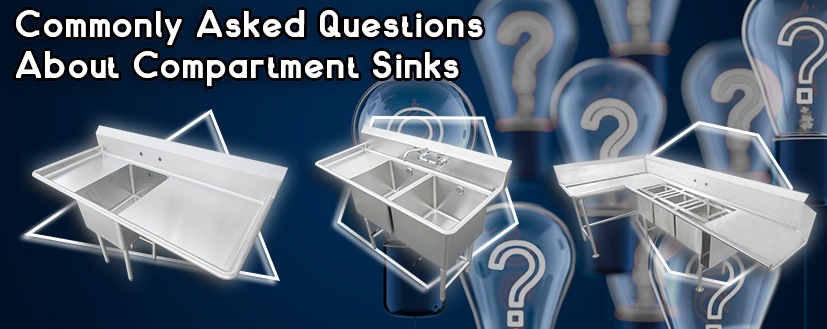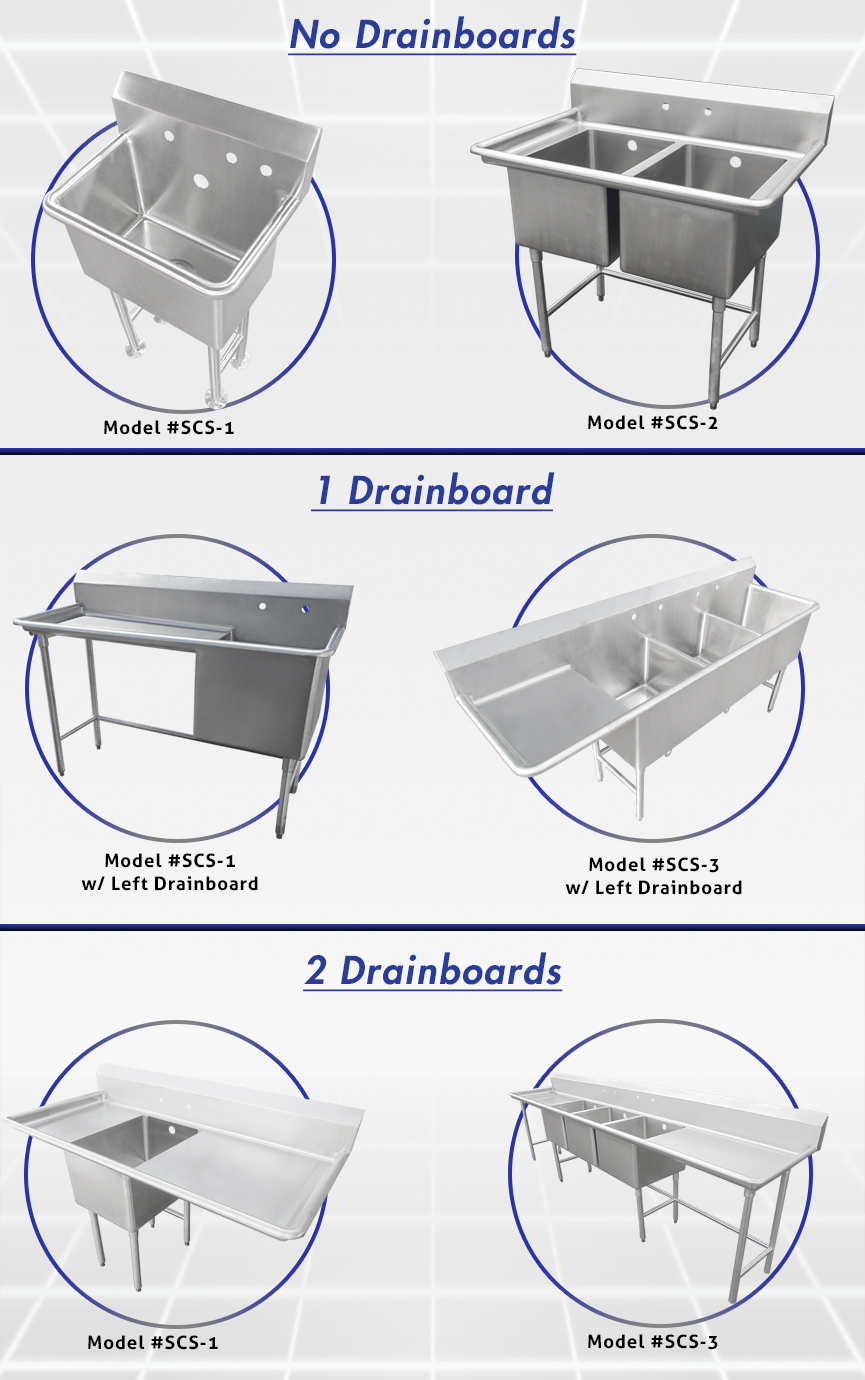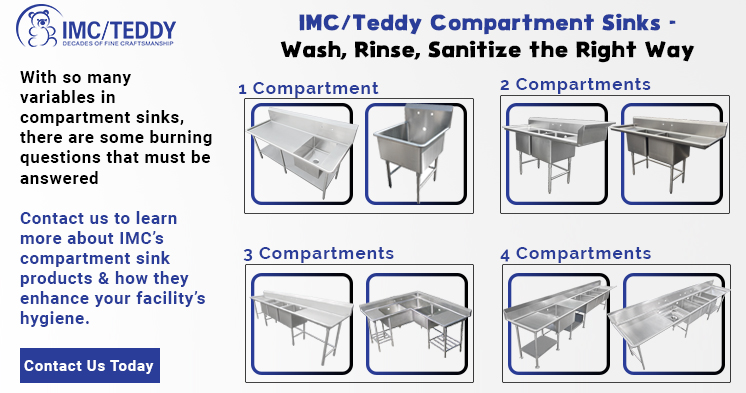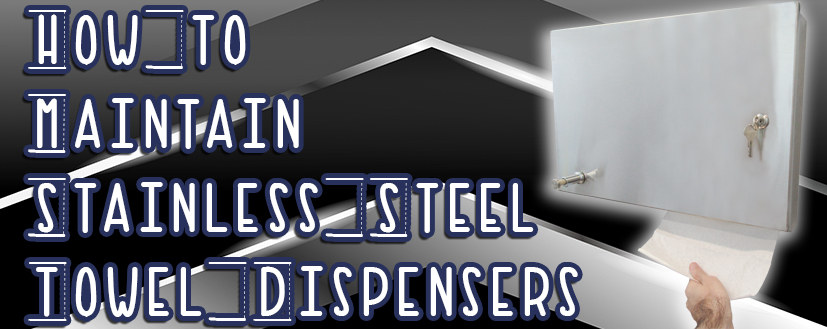Commonly Asked Questions About Compartment Sinks

If you’ve taken a look inside any commercial kitchen, you will undoubtedly find a compartment sink installed. That is because compartment sinks are FDA recommended. Everything from the water temperature to the sanitizer temperature to the washing procedures is outlined by the FDA & should be followed. However, selecting the right compartment sink can be a confusing state of affairs. We are here to shine some light on the subject.
In this article, we’ll give 5 of the most common questions asked about compartment sinks & give our answers to guide you. Let’s begin with question #1.
1. How Many Compartments Do I Really Need?
It’s the most common question & unfortunately, there is no one absolute answer. The truth of the matter is the number of compartments you will need entirely depend on your local codes.
For example – In New York State, two compartments is acceptable for cleaning utensils in hot detergent-sanitizer solution. However, in New York City, three compartment sinks are mandatory. In Florida, every food establishment must also have a 3 compartment sink no matter what. It can vary state to state, city by city.
Try to study up on your local regulations to make sure you are operating within legal limits. There is no sense paying the penalties later on!
2. About the Construction – 14 or 16 Gauge? Which is Better?
IMC offers all compartment sinks in 14 or 16 gauge type 304 stainless steel. There are some key differences between them & picking the correct gauge is just as important as picking the number of compartments.
14 gauge is the thickest material. It is needed for those who want a sink that can stand up to heavy use. It is often the sink of choice for larger operations.
16 gauge steel is a traditional choice due to cost effectiveness & durability. It is generally fit for most tasks.
A word on 18 gauge construction – it is not recommended for compartment sinks as it is not ideal for heavy weighted items.
3. What About Drainboards?
Drainboards can be equipped on the right side, left side or both sides. They are a convenient way of temporarily holding & drying your wares. They also add a bit of extra storage space. Once again, many local codes require a certain number of drainboards to be installed.
If local codes do not specify the number of drainboards, it’s up to you to decide if they will be necessary according to your operations. If you are a large volume operation, having 2 drainboards installed on your compartment sink will be a life saver.

4. What Faucet Choices Do I Have?
The three most common types of faucets for a compartment sink are a fixed gooseneck faucet, a swing nozzle faucet & a pre-rinse faucet.
A fixed gooseneck faucet will always have the nozzle in the same orientation; a swing nozzle gives you a bit more freedom. A pre-rinse faucet has a long, flexible hose for really getting off those extra food scraps in those hard to reach areas of your wares.
All IMC mounting holes are situated on the backsplash, so use only faucets that are designed to be splash mounted only.
Note – all IMC 3 & 4 compartment sinks come with 2 or more pairs of mounting holes on the backsplash so you will need to equip yours with multiple faucets.
5. My Floor Space is Limited & I Need a Compartment Sink. What Should I Look Into?
As most local guidelines require some sort of compartment sink to be installed, space issues can crop up. Although smaller 1 compartment sinks do exist, they may not fully adhere to your local regulations.
Instead, we recommend a corner compartment sink designed to take up the least amount of floor space. IMC corner compartment sinks are only available with 3 compartments with overall sizes ranging from 57½” x 57½” to 87½” x 87½”. For more information on IMC’s corner sink equipment, click here.
Compartment sinks are an integral part of facility hygiene & play an important role in safety. Also, having the proper compartment sink setup will avoid any regulation headaches. Finally, we HIGHLY recommend that all compartment sinks be NSF approved. This ensures that your sinks meet sanitary & safety protocols. To learn more about IMC’s compartment sinks, click here.




